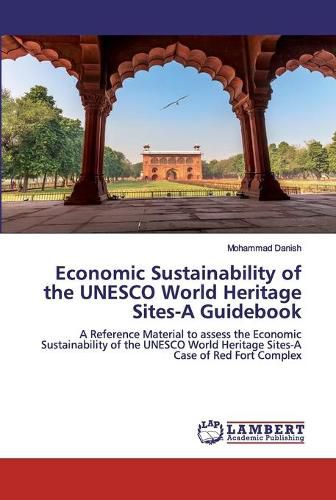Readings Newsletter
Become a Readings Member to make your shopping experience even easier.
Sign in or sign up for free!
You’re not far away from qualifying for FREE standard shipping within Australia
You’ve qualified for FREE standard shipping within Australia
The cart is loading…






This title is printed to order. This book may have been self-published. If so, we cannot guarantee the quality of the content. In the main most books will have gone through the editing process however some may not. We therefore suggest that you be aware of this before ordering this book. If in doubt check either the author or publisher’s details as we are unable to accept any returns unless they are faulty. Please contact us if you have any questions.
Sustainability has three dimensions: Social; Economic and Environmental. UNESCO has defined various indicators under the Economic Sustainability of Cultural heritage. This book aims to assess the Economic Sustainability of the UNESCO World Heritage Sites through the four-staged process as under: Evolving Destination Competitiveness Model for the selection of most optimum sites; Prioritizing Development Options in terms of Tourist Perceptions at the UNESCO World Heritage Sites; Estimating the Tourists’ Willingness to Pay for financing the service enhancement and facilities augmentation at the UNESCO World Heritage Sites and to conclude with the Formulation of Sustainable Economic Model for the UNESCO World Heritage Sites. Destination Competitiveness Model establishes the interface of Competitiveness and Sustainability for a given heritage site. The factor Analysis method identifies the Development Priority Options . CVM-WTP method introduces the Flexi-Pricing mechanism of Ticketing at the Sites. NPV method of analysis highlights the importance of the Willingness to Pay for the revenue generation and overall improvement in the tourist amenities at the site.
$9.00 standard shipping within Australia
FREE standard shipping within Australia for orders over $100.00
Express & International shipping calculated at checkout
Stock availability can be subject to change without notice. We recommend calling the shop or contacting our online team to check availability of low stock items. Please see our Shopping Online page for more details.
This title is printed to order. This book may have been self-published. If so, we cannot guarantee the quality of the content. In the main most books will have gone through the editing process however some may not. We therefore suggest that you be aware of this before ordering this book. If in doubt check either the author or publisher’s details as we are unable to accept any returns unless they are faulty. Please contact us if you have any questions.
Sustainability has three dimensions: Social; Economic and Environmental. UNESCO has defined various indicators under the Economic Sustainability of Cultural heritage. This book aims to assess the Economic Sustainability of the UNESCO World Heritage Sites through the four-staged process as under: Evolving Destination Competitiveness Model for the selection of most optimum sites; Prioritizing Development Options in terms of Tourist Perceptions at the UNESCO World Heritage Sites; Estimating the Tourists’ Willingness to Pay for financing the service enhancement and facilities augmentation at the UNESCO World Heritage Sites and to conclude with the Formulation of Sustainable Economic Model for the UNESCO World Heritage Sites. Destination Competitiveness Model establishes the interface of Competitiveness and Sustainability for a given heritage site. The factor Analysis method identifies the Development Priority Options . CVM-WTP method introduces the Flexi-Pricing mechanism of Ticketing at the Sites. NPV method of analysis highlights the importance of the Willingness to Pay for the revenue generation and overall improvement in the tourist amenities at the site.